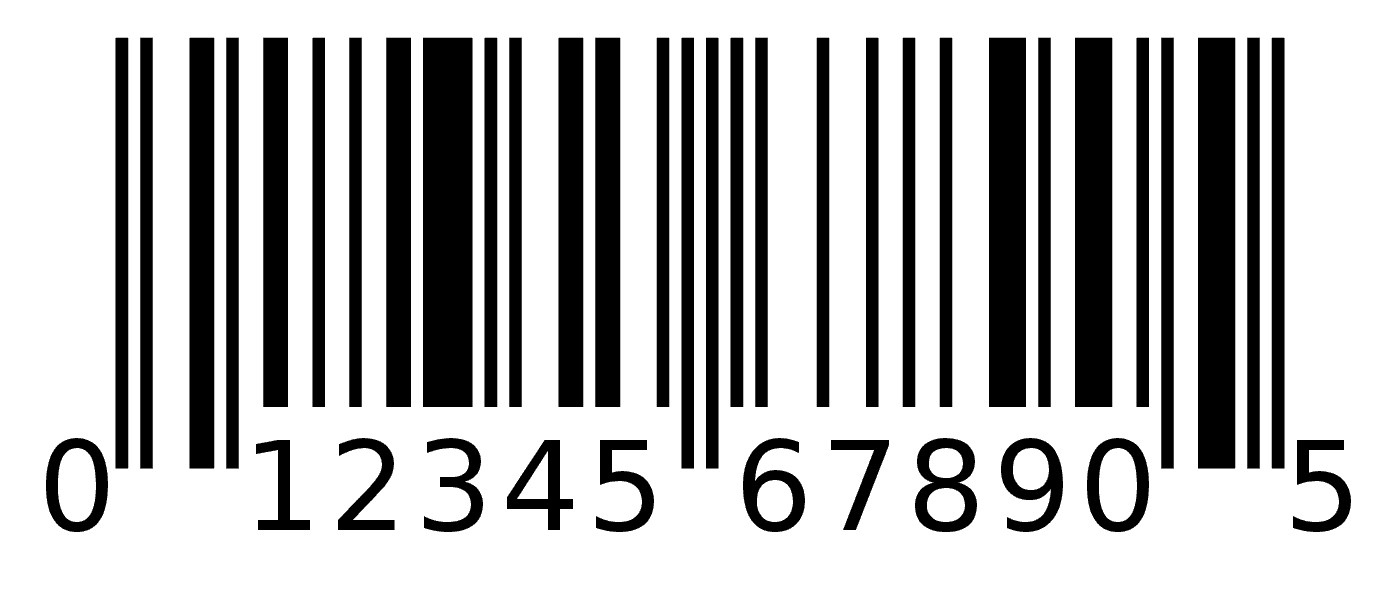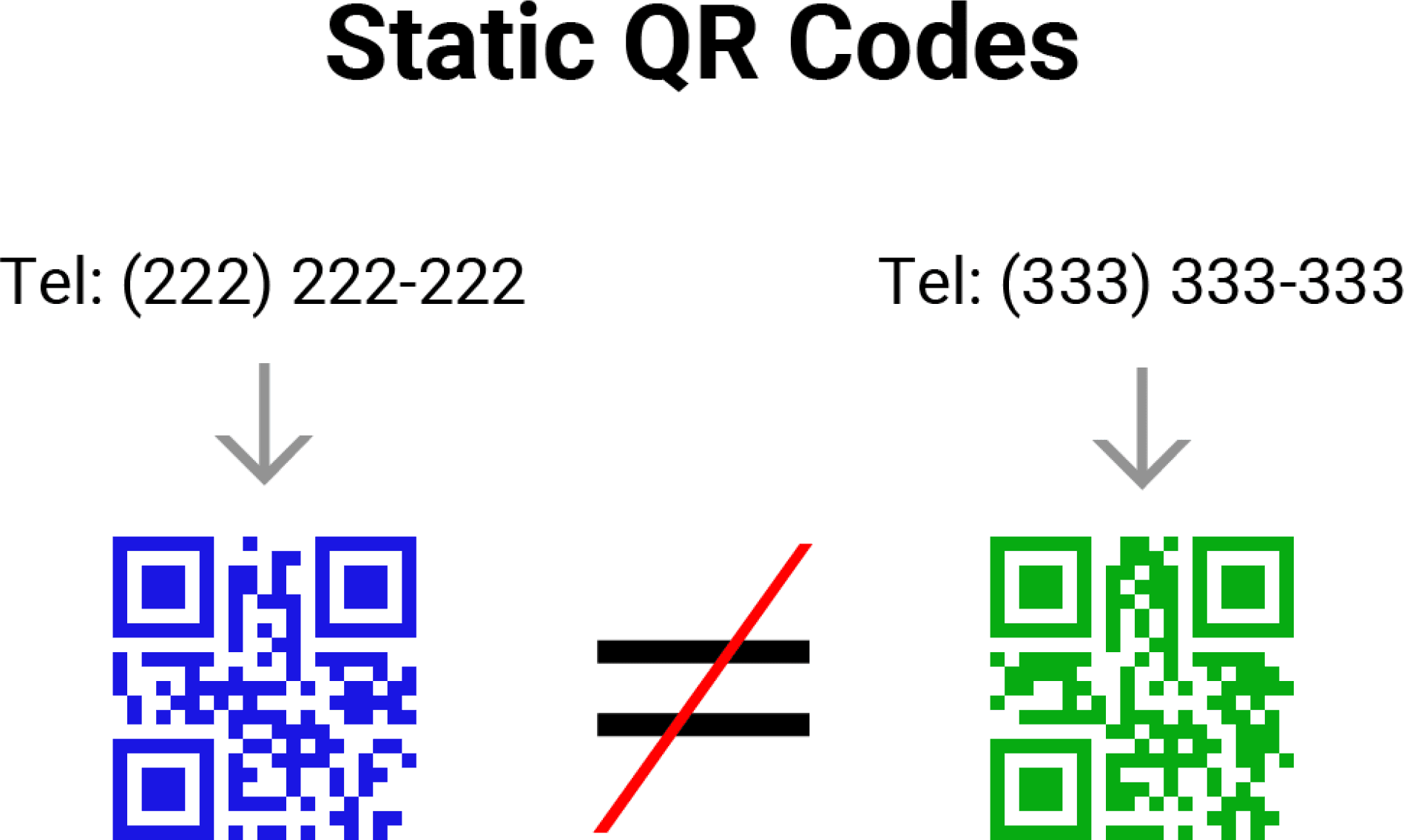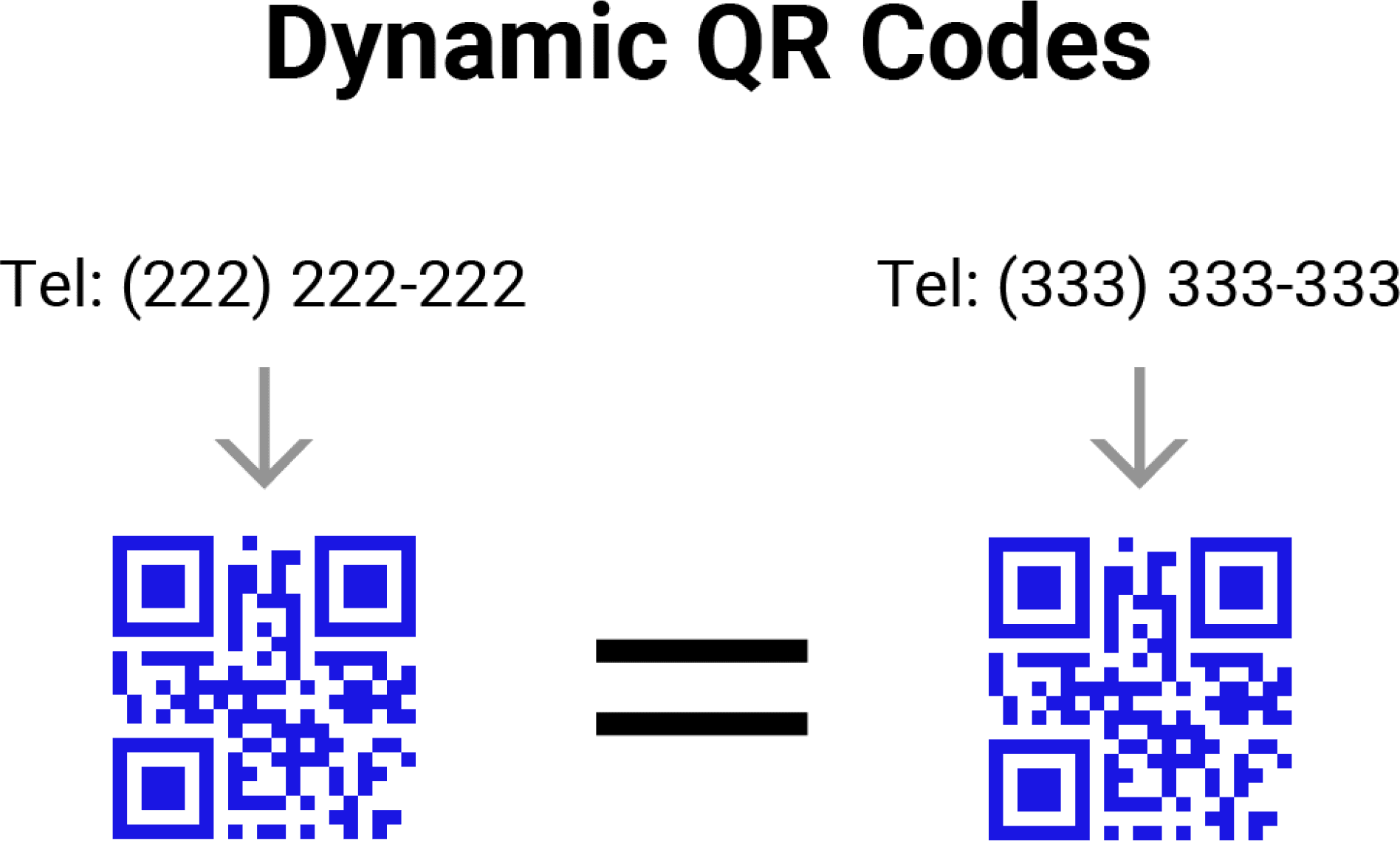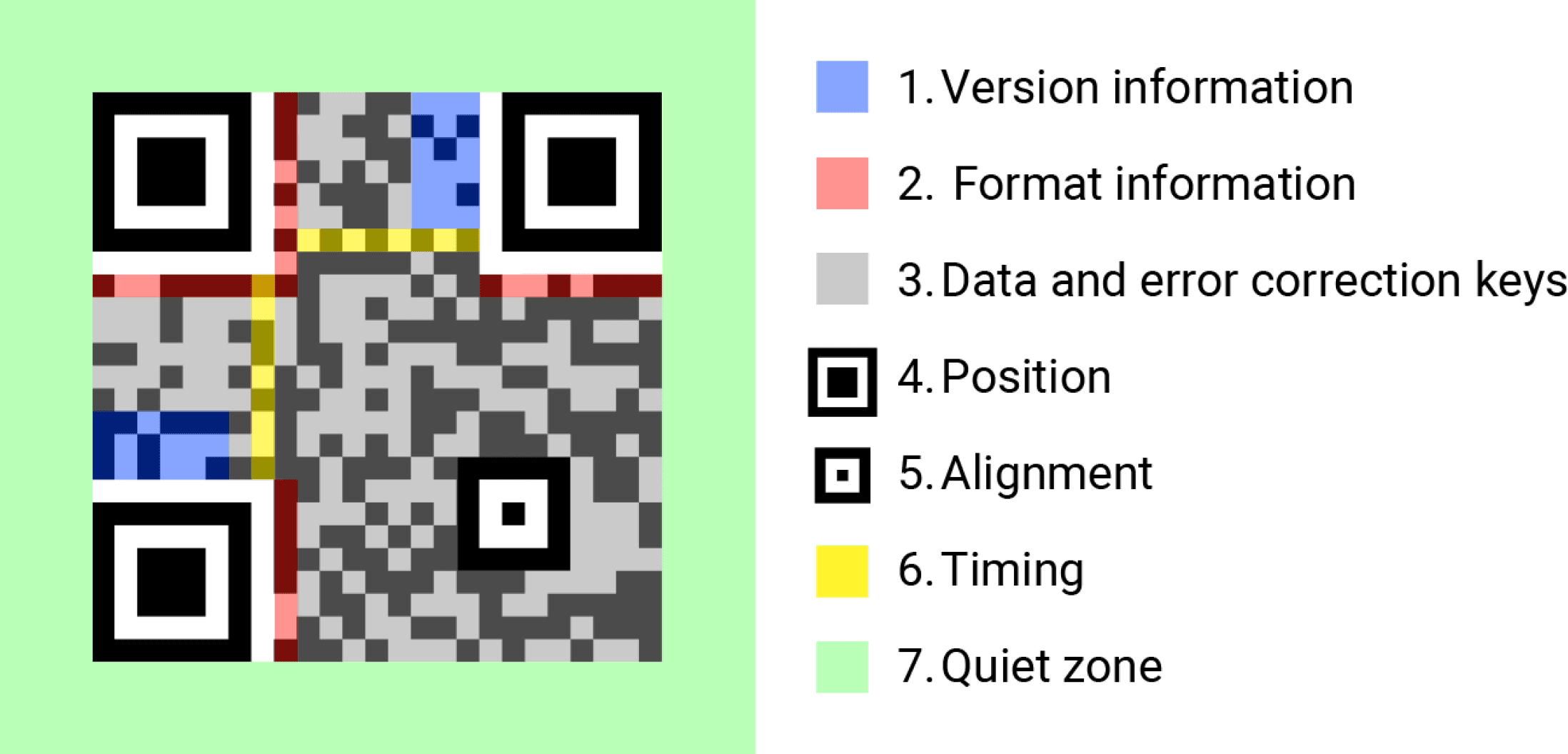How Do QR Codes Work? Full Interactive Explanation

What Is a QR Code?
A QR code is an image consisting of squares that encode specific data. This image can be detected and deciphered by various devices, such as QR code scanners and smartphones. We will give more detailed technical explanation later in the article.
The History of QR Codes
Before we had QR codes, most people used UPC codes (read more about UPC codes here)


QR codes were invented by Hara Masahiro of the company Denso. He was tasked with improving the scanning speed of UPC codes, as Denso employees had to scan up to 1000 of them daily.
Rather than merely enhancing the speed of UPC codes, Hara created QR codes, which can hold significantly more data. This meant employees wouldn't have to scan as many codes each day, given the increased data capacity of QR codes compared to UPC codes.
While Hara expected that QR codes would be used widely in the manufacturing industry, he was surprised of their massive success beyond that sector. He said:
At the time, I felt that I had developed something great, and predicted that it would be widely used in the industry in the future. But it was widely used by general users, which I did not expect. It was used as a payment method. It was completely unexpected.
QR Code Data Types
In your day-to-day life, you probably notice QR codes quite often. You can see them in restaurants, on business cards, and on billboards. If you were to scan them all with your smartphone, you would notice that different things can happen.
Some QR codes can open a website, while others can add a new contact to your Contacts app. Why is that? It's thanks to the fact that QR codes can hold different types of data. Let’s take a look at the most common data types.
Link
If you want people to visit your website or social media page, use a link data type for the QR code. After scanning, depending on the device, it will either open a browser or display the website link.
Phone Number
If you want people to access your phone number, use the phone number data type for the QR code. After scanning, it may either open the Contacts app with the phone number field populated or display the number on the screen.
V-Card
The V-Card data type is similar to the phone number data type but can contain much more than just a number. It's commonly used for business cards. Scanning a QR code with this data type will typically open the Contacts app on your phone with all the provided fields pre-filled. This allows you to generate a code that can instantly create a contact with your name, address, email, and multiple phone numbers.
If you want to display a PDF in a viewer or in a web browser, the PDF data type is your choice. Technically, it's not an actual data type. The QR code simply contains a link to a server hosting the PDF file. This approach is commonly used in restaurants for QR menus.
WiFi
The Wifi data type can be found in many public places. After scanning it, people can connect to the Wifi network without entering the password or the SSID (the network's name).
Two Types of QR Codes
QR codes can be broadly categorized into two types: Static and Dynamic. This distinction refers to the method of updating data within the QR code.
Static QR Codes
With static QR codes, any change (like updating your website, phone number, etc.) requires reprinting the entire code to replace the old one. This is because the data you input is directly encoded within the image itself.

Dynamic QR Codes
Dynamic QR codes enable you to modify the data they contain without changing the QR code image itself, eliminating the need for reprinting. This is possible because the QR code directs users to a website, which in turn redirects to your data. When updates are made, the website simply points to the new data while the QR code remains unchanged. Some services, such as CreateYourQr, offer additional benefits for dynamic QR codes, including the ability to track when and where your codes are scanned.

Static vs. Dynamic
You're now familiar with the primary distinctions between static and dynamic QR codes. As for which one to choose, we strongly advocate for dynamic QR codes. Even if you don’t see a need to change your data and you don’t want to know viewing analytics, it is still helpful to be able to fix some QR content when you make a mistake.
Technical Details of QR Codes

Data Module
These are the small squares you see in the QR code. They encode and represent your data.
Position Marker
These are the three large squares located in the corners. You'll find them in every QR code you encounter. They're used by QR code scanners to detect the QR code and determine the scanning direction.
Alignement Marker
These are the medium-sized squares.
The first version of the QR code didn't have these alignment markers. Subsequent versions of the QR code have incorporated more alignment patterns as the number of data modules increases. You can check our interactive demo below to understand it better.
Format Information
This contains information about the data type inside the QR code. We discussed some of these data types earlier, like link, V-Card, or WiFi.
Version Information
QR codes come in different versions which define how many modules they contain. You can learn more about it here or check out our interactive demo below to see it live.
Timing Information
Every QR Code features two timing patterns: a horizontal pattern and a vertical pattern. The patterns are one module wide and are composed of alternating dark and light modules. Each pattern starts and ends with a dark module. These patterns are utilized to determine module coordinates.
Quiet Zone
This refers to the blank space surrounding the QR code. It helps QR code scanners detect the QR code.
QR Codes with Logos
You might wonder how some companies embed their logo within a QR code without compromising its scannability. After all, doesn't the logo cover the data modules?
The key lies in error correction. Each QR code can be generated with varying levels of error correction, by essentially duplicating data. This means that even if some parts of the data are obscured or missing, the QR code remains scannable because of the redundancy.
You can try to add a logo to your QR code manually, but there is a risk that you will cover non-duplicated data modules or other vital parts like version or timing information. However, services like CreateYourQr automatically determine the appropriate error correction level and ensure the logo is positioned correctly, ensuring the QR code remains functional.
to create a QR code with a logo.

QR Code Scanners
We talked about the process of generation a QR code. It’s time to talk about scanning them. To do that you need a device that is equipped with a camera that can detect and interpret QR codes. Nowadays almost all people have scanners in their pockets - smartphones. It’s actually one of the reasons why QR codes become so popular. Everyone can scan them and you can track that and take business decisions based on that.
Can All Phones Scan the QR Code?
All modern Android and iOS smartphones can scan QR codes. If you have an Android 8.0 or newer or iOS 11 or newer, you can scan QR codes using your camera app. Older devices needs to use a different software to do that. You can download QR Code scanners from the App store or scan using our web app that does not require any installation. You can access it using this link
Why use CreateYourQr?
If you ever want to create a static QR code, you can use CreateYourQr. You can create unlimited amount of static QR codes for free. And if you ever need additional benefits of dynamic QR codes, you can upgrade your account and use them.
Tracking When and Where Your QR Codes Are Scanned
The paid plan allows you to see where and when your QR codes are scanned. If you run a huge marketing campaign you know why it is useful. And if you are a small business owner having just a few billboards in the city, you can save a lot of money by tracking whose billboards get noticed. You put a different dynamic QR code on each of them and track which ones perform the best, so that you can only pay for those.
Creating QR Codes from PDFs
If you need a menu, brochure or some guide in a QR code, it is available for you with CreateYourQr pro plan. You can store PDF files on our servers and replace them anytime you want. It is not possible to do by creating a QR code with a link to Google Drive because this link will change everytime you change a file. Because storing files cost us money, we couldn’t include that in a free plan.
Easy-to-Use Interface
We put a lot of work into simplifying our user interface as much as we can, so that you don’t need to learn anything. You just know where to click at the first glance. However if you ever feel confused, just hit us a message and we will reply as soon as possible and consider improvements to prevent similar problems to to yours in the future.
to track QR code scans.

References
- https://www.qrcode.com/en/about/version.html
- https://www.denso-wave.com/en/technology/vol1.html
- https://qrcode.meetheed.com/question14.php
- https://www.keepautomation.com/tips/qr_code/functions_of_qr_code_function_patterns.html
- https://cntechpost.com/2019/12/19/inventor-of-qr-code-i-never-thought-it-could-be-used-for-payment/